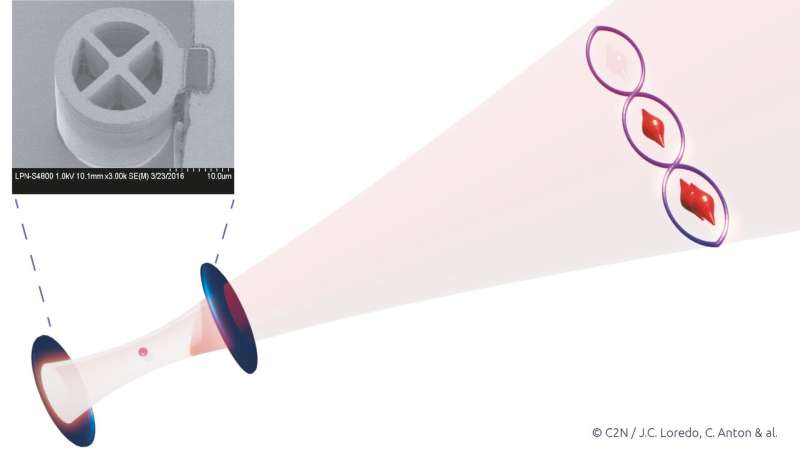Generation of light in a photon-number quantum superposition

Physicists at C2N have demonstrated for the first time the direct generation of light in a state that is simultaneously a single photon, two photons, and no photon at all. They showed that the same kind of light emitter used for decades is also able to generate these quantum states, and expect that this holds true for any kind of atomic system.
Quantum superposition is a property of quantum physics that allows objects to exist simultaneously in different states. A famous theoretical example is the Schrödinger's cat, which is both dead and alive. Let us imagine a mouse trying to find the exit of a maze. In the classical realm, it will try every path, one at the time, until it finally finds the exit. In the quantum world, however, superposition allows the mouse to try all different paths simultaneously, therefore finding the exit much faster. For light, superposition has been shown in several of its properties. For instance, in its polarization, where the electromagnetic field of a single photon oscillates both vertically and horizontally, or in a path, taking all possible trajectories inside interferometers, the photonic version of a maze. Superposition is also possible in time, with photons existing simultaneously at earlier and later moments.
However, creating light in a state that is simultaneously a single photon, two photons, or no photon at all, in other words a quantum superposition of "photon numbers," has remained elusive. Some complex experiments have achieved these superposition states a few times, but it has never been achieved on demand, meaning with success at every experimental run. Moreover, it was not known whether direct emitters of these states existed. In a work published in Nature Photonics, researchers from CNRS and collaborators have demonstrated for the first time the on-demand generation of light in a quantum superposition of photon numbers.
The researchers studied the emission of an artificial atom, a semiconductor quantum dot inserted in an optical microcavity. "By performing a coherent excitation of the quantum dot with optical pulses, we showed that the quantum coherence in the atomic state is preserved through the process of spontaneous emission and imprinted onto the emitted photonic state, generating a quantum superposition of zero, one, and two photons," note Juan Loredo and Carlos Antón, lead authors of the study.
Such observations, never seen before in any atomic system, demonstrate that artificial atoms like quantum dots are now controlled to such a point that they behave as the systems described in textbooks. These new quantum states of light based on the coherent superposition of photon number states open exciting paths for designing and implementing new schemes in quantum communication and computation.
More information: J. C. Loredo et al. Generation of non-classical light in a photon-number superposition, Nature Photonics (2019). DOI: 10.1038/s41566-019-0506-3
Journal information: Nature Photonics
Provided by Centre for Nanoscience and Nanotechnology




















